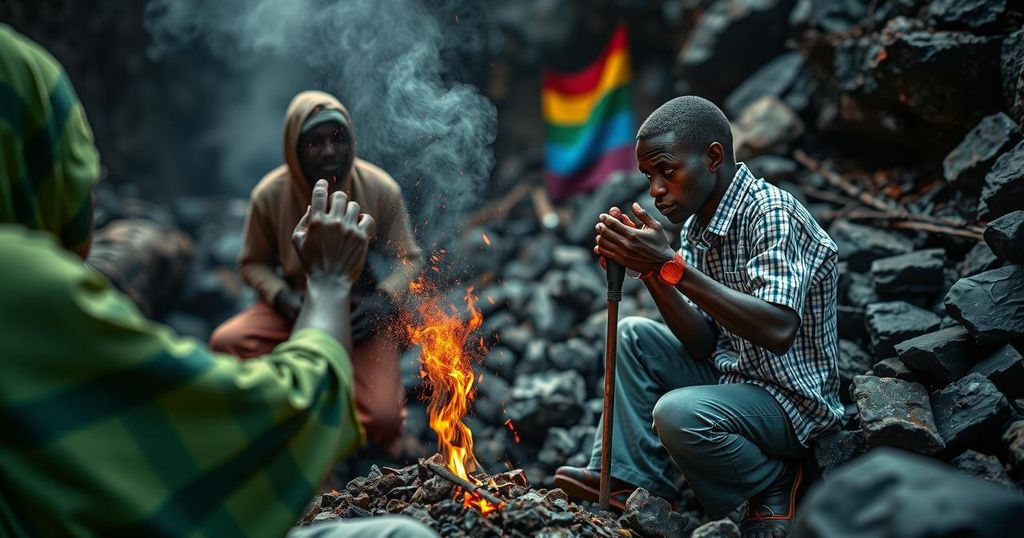Artisanal mining accounts for 10-20% of the DRC’s copper and cobalt production, with over 200,000 miners facing significant health risks. Despite government promises to formalize the sector since 2002, little progress has been made in improving safety conditions. The current framework leaves artisanal miners to operate largely outside the law while suffering under hazardous working environments, highlighting the need for urgent reform and proper training.
In the Democratic Republic of Congo (DRC), artisanal mining constitutes approximately 10-20% of the national copper and cobalt output. Despite the government’s commitment to formalizing this sector as early as 2002, the numerous health and safety risks faced by artisanal miners remain largely unmitigated. Currently, around 200,000 individuals rely on artisanal mining in the Katanga region, engaging in arduous labor with basic tools in hazardous environments. Although the DRC government had pledged to facilitate a transition to semi-industrial mining, there has been minimal advancement in this area over two decades. Following the fracturing of the state-owned mining entity, Gécamines, into private companies, the DRC pledged to create a formal framework for artisanal mining operations. However, the promised zones designated for artisanal exploitation as laid out in the 2018 Mining Code have yet to be allocated appropriately. The World Bank estimates that artisanal miners sustain the livelihoods of approximately 10 million people across the nation, however, many operate outside legal boundaries, often drifting between sites and encroaching on areas designated for larger enterprises. Frédéric Malu, director of CENADEP, an NGO dedicated to supporting artisanal miners, noted, “These are not artisanal mining zones. They are areas that belong to companies, but where artisanal miners are allowed to operate.” Additionally, these mining cooperatives face significant challenges securing capital to invest in necessary production equipment for semi-industrial activities. In an effort to address this, the DRC government initiated the Entreprise générale du cobalt (EGC), a subsidiary of Gécamines, to streamline the formal mining processes and enhance safety for artisanal miners. However, the long-awaited allocations for these miners will not be realized until February 2024, an unacceptable delay for those in urgent need of support. Additionally, the artisanal mining sector confronts numerous dangers, including exposure to harmful materials and unsafe working conditions. Creusers typically work in unreinforced tunnels without protective gear, with many facing radiation from the ores containing uranium and thorium. In recent reports, shipments containing unacceptable levels of radiation led to rejections from South Africa, highlighting the extent of the hazards involved. Health professionals have noted a worrying prevalence of cancers among mining families, particularly among children. Experts argue that improved education and safety training could significantly reduce health risks associated with artisanal mining. As Jean-Pierre Djibu from the University of Lubumbashi stated, informing and training miners is vital to their safety, pointing out, “Until people are trained, they remain unaware and don’t protect themselves.” This ongoing situation reflects the urgent need for the DRC government to fulfill its promises and protect the health and wellbeing of its artisanal mining population.
The context surrounding artisanal mining in the Democratic Republic of Congo is complex and critical to understanding the plight of its workforce. Artisanal mining, a practice that involves small-scale extraction of minerals, is a significant economic activity within the DRC, particularly for copper and cobalt, central to the global supply chain for electronic components and battery production. Over the past two decades, the government has expressed intentions to formalize this sector, yet has failed to enact substantial changes that would safeguard the health and safety of miners. This lack of progress has left thousands of workers vulnerable to exploitation and health risks.
In summary, the artisanal mining sector in the Democratic Republic of Congo remains perilous, with little advancement since the government’s initial commitment to formalization in 2002. Despite promising initiatives such as the creation of EGC, the government has yet to make tangible improvements to the working conditions or safety nets for the artisanal miners. Without effective intervention, education, and a conscientious effort to allocate mining zones fairly, the health and livelihood of these workers continue to hang in a precarious balance.
Original Source: news.mongabay.com






